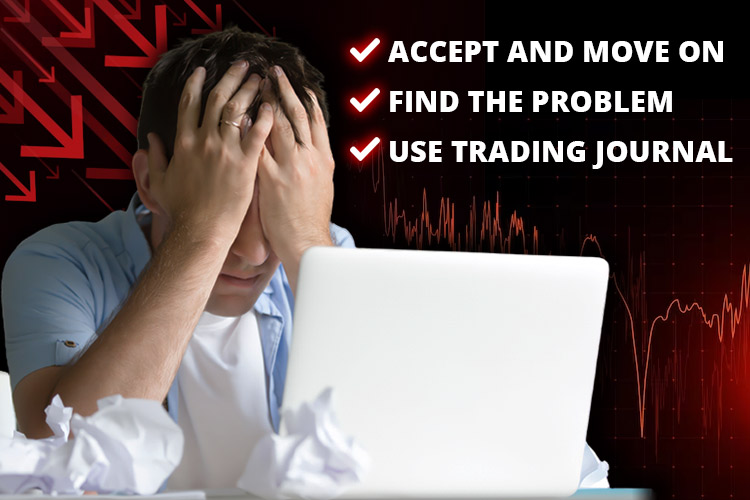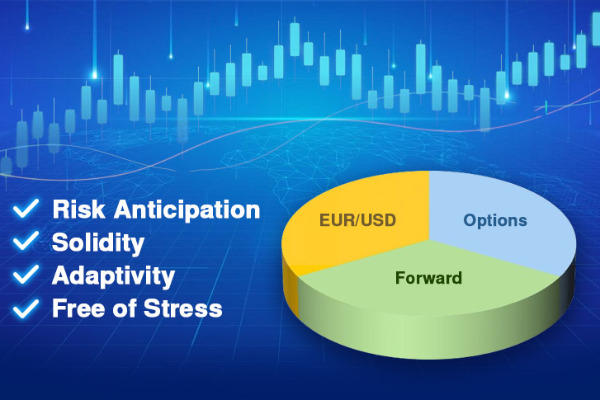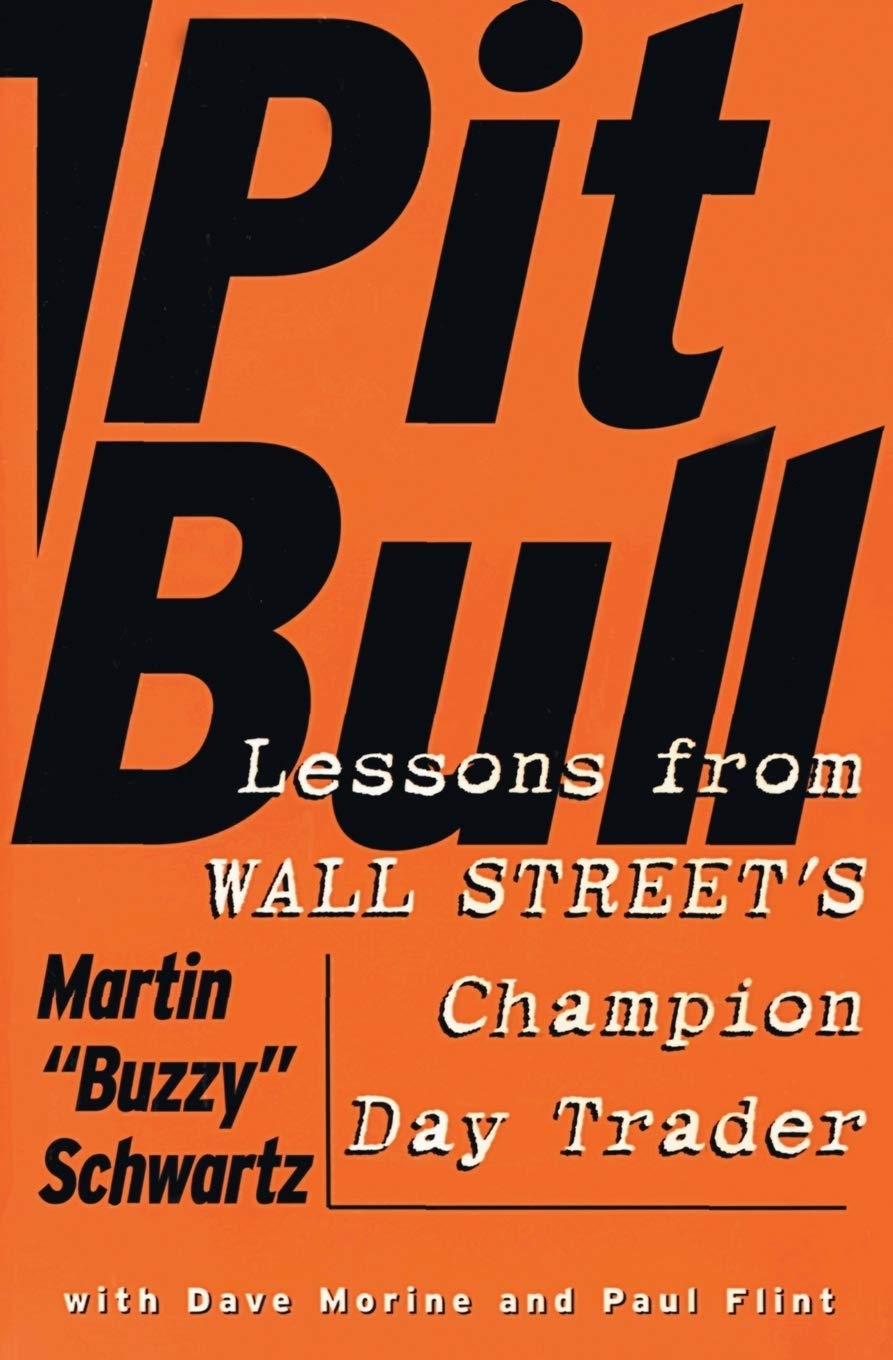If you experience trading losses, accept them first, then move on. Afterward, begin to analyze your mistakes and record them in your trading journal.

Trading losses are something you cannot avoid. You cannot only wish for wins without experiencing losses. Most new traders often mistakenly believe that when they incur losses, their trading career comes to an end.
However, trading losses are entirely normal and very common. You must make peace with trading losses because we all make mistakes. No one is perfect, and the same applies to forex trading.
From a professional perspective, trading is a business; every business has expenses that must be deducted from income to generate profits.
You certainly cannot run a business without expenses, right? Of course, you want to minimize these expenses as much as possible, but it's clear that expenses are something you cannot avoid in any business.
Therefore, instead of getting emotional or feeling down, what you should do is only deal with it. Here's how to deal with losses:
- Acceptance is key
- Review your position sizing
- Find the problem
- Minimize the number of trades
- Make a trading journal
- Consider learning again
Read more for a detailed explanation of the six tips above.
1. Accept It First and Move On
Yes, acceptance is hard, especially when facing the reality that you have to let go of your hard-earned money just because of a loss. It's indeed tough, but this is the first thing you must do.
When dealing with trading losses, you can only bounce back if you are willing to do it yourself. Don't blame others or the market. Accept that this loss is purely the result of your own, as you've been trading by yourself all this time.
You can take a step back and breathe, especially after experiencing a big loss. Stay away from the forex market and your computer desk for a while to avoid anxiety. Go for a walk with friends, watch a movie, or sip your favorite coffee at the coffee shop. All of that will help you to calm down.
It's very risky to jump right back into the action because impulsive actions (or revenge trading) can lead to even more significant losses. Once you are calm and level-headed, then re-enter the market.
No one is rushing you, so take your time. Once you're done, then come back. When you're back, you must not repeat your past mistakes.
2. Optimize Position Sizing
Reviewing your position sizing is a basic aspect of trading, but it's an area where many traders struggle. Too often, traders expose themselves to excessive risk, which can put their entire trading capital in danger.
A good position sizing strategy is essential for managing this risk effectively. This strategy involves allocating only a small percentage of your trading capital to each trade, thereby limiting the risk associated with individual trades and, consequently, reducing overall market risk.
So, how much should you be willing to risk?
Well, in essence, you should risk an amount that you're truly willing to lose if it comes to that. However, many beginner traders make mistakes because they don't calculate it properly.
For instance, does 10% sound like a small number? Especially when it comes to discounts, that amount might seem trivial. But what you're doing is forex trading, not shopping. Risking 10% is way too high. To make it clearer, let's take a look at the following example.
Imagine you have a trading capital of $10,000. Without a proper position sizing strategy, you risk 10% of your capital for each trade.
- Trading capital: $10,000
- Risk per trade: 10% of $10,000 = $1,000
In this scenario, you risk a substantial $1,000 on every trade. If you experience a series of losses, your capital could quickly diminish, threatening your ability to continue trading. Now, let's see how implementing a position sizing strategy can make a significant difference.
You eventually decide to adopt a conservative position sizing strategy. You only risk 2% of your trading capital on each trade.
- Trading capital: $10,000
- Risk per trade: 2% of $10,000 = $200
With an approach like this, you limit your risk to $200 per trade, automatically reducing the impact of individual losses on your overall capital. Even if you face a string of losses, your capital will be better preserved.
3. Diagnose Your Issues
Just as you visit a doctor to determine what ails you when you're feeling unwell, you also need to diagnose your trading activities, especially when you incur losses. If there are losses, it can be said that something is wrong, right?
There are two methods of diagnosis you should undertake: technical and emotional. In terms of the technical aspect, try to review things such as:
- Stop-loss settings
- Technical indicators, which might be inaccurate
- Allocation settings
- Have you conducted backtesting?
Then there are also some emotional aspects to consider, including:
- Panic
- Overconfidence
- Falling into FOMO (Fear of Missing Out)
- Revenge trading
Conducting a review of these aspects can help you pinpoint your mistakes. For example, you realize that using just one indicator, let's say Moving Average, is not sufficient to meet your needs for determining entry points because it only provides the direction of market movement. From there, you'll know that you need an indicator to identify entry momentum, which you can obtain by using indicators like RSI or Stochastic.
Take another example related to the emotional aspect. From your previous losses, you realize that you placed too much trust in the advice of someone on a trading forum who recommended signal trading.
Fearing missing out on significant profits, you placed orders without creating a trading plan first. It was only after incurring losses that you realized the person giving recommendations had disappeared from the forum. There are many lessons to be learned, right?
4. Reduce the Number of Trades
Sometimes, you experience a series of losses because you open too many positions, or it can be called overtrading. Overtrading is a process where you open more than 10 trades per day. You might think that the more positions you open, the more profit opportunities you have.
Well, trading is not the same as a lottery. If you trade excessively, you will be exposing yourself to unnecessary losses, especially if it's not accompanied by a clear and effective trading strategy.
Therefore, if you find yourself still opening too many positions, it's essential to break that habit. It's recommended to limit yourself to a maximum of only 2 trades per day to reduce the potential for trading losses.
5. Keep a Record of Everything in Your Trading Journal
Next, it is highly recommended that you regularly create a trading journal. A trading journal is a functional document that allows you to record and analyze your losses systematically.
You don't need to envision a complex document with a formal format. Your trading journal can take any form you prefer. You can create it in Word, or you can write it by hand in a notebook. There's no specific format required as long as it includes elements such as:
- Date and time
- Trading instrument
- Order type
- Entry and exit price
- Trade size
- Stop loss and take profit levels
- Trading strategy
- Reason to trade
- Risk management
- Trade duration
- Outcome
Adding notes about your emotions and feelings at the time, as well as valuable lessons from the outcome, will make your journal more comprehensive.
Customize it according to what you find important. A good trading journal is one that can help you evaluate your trading decisions, track your progress, and continuously improve your trading. That's a tool that also helps you to deal with losses.
6. Seek Expertise
Last but not least, you may consider learning more about trading. Perhaps you've experienced losses multiple times simply because you haven't completed your trading education. This is especially true if you've already tried the previous tips but there hasn't been any significant change.
There are many avenues you can explore because knowledge can come from anywhere. For instance, you can ask knowledgeable friends, join trading forums, read books, listen to podcasts, attend live webinars, or take trading courses.
By doing so, you'll gain valuable insights. You won't dwell on the losses you've experienced before because you'll be busy gathering other, more crucial information.
See Also:
Final Thoughts
There's no need to be too sad because of losses. Even Warren Buffett couldn't avoid losses throughout their careers in trading and investment.
In fact, most successful traders have experienced significant losses. However, they managed to turn their losses into successes. Some ways to achieve this include following the six tips mentioned above. Remember, experiencing losses in trading is not the end of the world.
Not only Warren Buffett but traders like Jonathan Morgan, Jarrat Davis, Kim Krompass, and Kiana Danial have also experienced significant losses. Here are their inspirational stories of learning from losses to achieve success.

 Dedicated FREE FOREX VPS
Dedicated FREE FOREX VPS Free FOREX Virtual Private Server
Free FOREX Virtual Private Server MT4 Demo Contest, Get $500
MT4 Demo Contest, Get $500 Sign Up for an Account, Claim 60% Deposit Bonus
Sign Up for an Account, Claim 60% Deposit Bonus Free MT4/MT5 VPS 2024
Free MT4/MT5 VPS 2024 Send E-mail and Get Free Merchandise
Send E-mail and Get Free Merchandise $1K Refer a Friend Bonus for Pepperstone Pro clients
$1K Refer a Friend Bonus for Pepperstone Pro clients Maximize Your Earnings with 100% Deposit bonus
Maximize Your Earnings with 100% Deposit bonus Trade to Win, $5,000 Monthly Demo Contest
Trade to Win, $5,000 Monthly Demo Contest Claim 30% + 15% Deposit Bonus from LiteFinance
Claim 30% + 15% Deposit Bonus from LiteFinance








